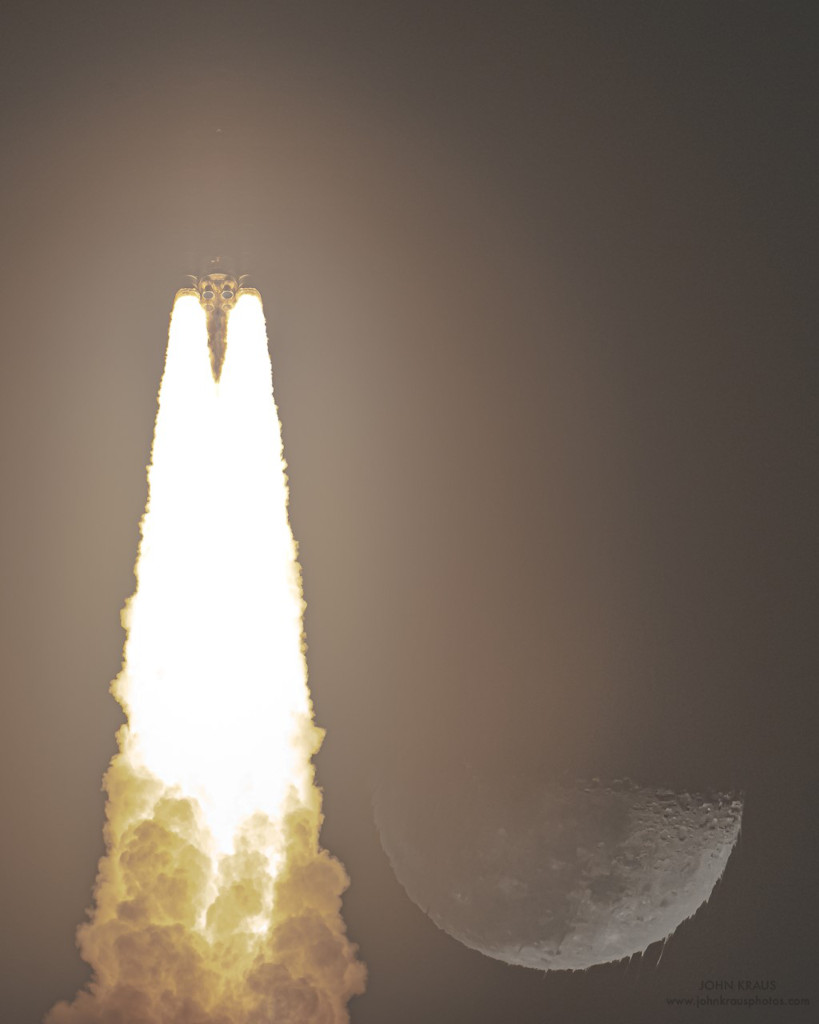2022年11月19日
Artemis 1 Moonshot
Image Credit & Copyright: John Kraus
Explanation: When the Artemis 1 mission’s Orion spacecraft makes its November 21 powered flyby of the Moon, denizens of planet Earth will see the Moon in a waning crescent phase. The spacecraft will approach to within about 130 kilometers of the lunar surface on its way to a distant retrograde orbit some 70,000 kilometers beyond the Moon. But the Moon was at last quarter for the November 16 launch and near the horizon in the dark early hours after midnight. It’s captured here in skies over Kennedy Space Center along with the SLS rocket engines and solid rocket boosters lofting the uncrewed Orion to space. Ragged fringes appearing along the bright edge of the sunlit lunar nearside are caused as pressure waves generated by the rocket’s passage change the index of refraction along the camera’s line of sight.
Tomorrow’s picture: ripples over Tibet
阿尔忒弥斯1号的探月任务
图像提供与版权: John Kraus
说明: 当阿尔忒弥斯1号任务的猎户座太空船,在11月21日以自主动力飞越月球之时,地球上的住民将看到月亮带着残月的下弦月相。在前往月球后方约70,000公里的远逆行轨道的旅程中,这艘宇宙飞船将约以130公里的间距掠过月表。不过,在11月16日这艘火箭发射时,下弦月低悬在子夜时分地平线上方的黝黑天空中。这幅图像记录了在肯尼迪航天中心的上空,这艘太空发射系统火箭的引擎及固体火箭助推器,奋力把无人驾驶的猎户座往太空推送的景象。由于火箭通过时所产生的压力波,改变了相机视线方向的空气折射率,因此日曜的月球正面之明亮边缘,出现参差的波纹。
明日的图片: ripples over Tibet



